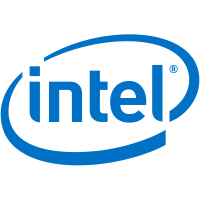Intel UHD Graphics 710 vs ATI Mobility FireGL V5200
Comparative analysis of Intel UHD Graphics 710 and ATI Mobility FireGL V5200 videocards for all known characteristics in the following categories: Essentials, Technical info, Video outputs and ports, API support, Memory, Technologies, Compatibility, dimensions and requirements. Benchmark videocards performance analysis: PassMark - G2D Mark, PassMark - G3D Mark, Geekbench - OpenCL.
Differences
Reasons to consider the Intel UHD Graphics 710
- Videocard is newer: launch date 15 year(s) 11 month(s) later
- 3.1x more boost clock speed: 1300 MHz vs 425 MHz
- 2039.2x more texture fill rate: 10.40 GTexel/s vs 5.1 GTexel / s
- 10.7x more pipelines: 128 vs 12
- A newer manufacturing process allows for a more powerful, yet cooler running videocard: 10 nm vs 90 nm
- Around 28% better performance in PassMark - G2D Mark: 318 vs 248
- 24x better performance in PassMark - G3D Mark: 1082 vs 45
| Specifications (specs) | |
| Launch date | 4 Jan 2022 vs 1 February 2006 |
| Boost clock speed | 1300 MHz vs 425 MHz |
| Texture fill rate | 10.40 GTexel/s vs 5.1 GTexel / s |
| Pipelines | 128 vs 12 |
| Manufacturing process technology | 10 nm vs 90 nm |
| Benchmarks | |
| PassMark - G2D Mark | 318 vs 248 |
| PassMark - G3D Mark | 1082 vs 45 |
Reasons to consider the ATI Mobility FireGL V5200
- Around 42% higher core clock speed: 425 MHz vs 300 MHz
| Core clock speed | 425 MHz vs 300 MHz |
Compare benchmarks
GPU 1: Intel UHD Graphics 710
GPU 2: ATI Mobility FireGL V5200
| PassMark - G2D Mark |
|
|
||||
| PassMark - G3D Mark |
|
|
| Name | Intel UHD Graphics 710 | ATI Mobility FireGL V5200 |
|---|---|---|
| PassMark - G2D Mark | 318 | 248 |
| PassMark - G3D Mark | 1082 | 45 |
| Geekbench - OpenCL | 3487 |
Compare specifications (specs)
| Intel UHD Graphics 710 | ATI Mobility FireGL V5200 | |
|---|---|---|
Essentials |
||
| Architecture | Generation 12.2 | R500 |
| Code name | Alder Lake GT1 | M56 |
| Launch date | 4 Jan 2022 | 1 February 2006 |
| Place in performance rating | 733 | 730 |
| Type | Desktop | Mobile workstation |
Technical info |
||
| Boost clock speed | 1300 MHz | 425 MHz |
| Compute units | 16 | |
| Core clock speed | 300 MHz | 425 MHz |
| Manufacturing process technology | 10 nm | 90 nm |
| Peak Half Precision (FP16) Performance | 665.6 GFLOPS (2:1) | |
| Peak Single Precision (FP32) Performance | 332.8 GFLOPS | |
| Pipelines | 128 | 12 |
| Pixel fill rate | 10.40 GPixel/s | |
| Texture fill rate | 10.40 GTexel/s | 5.1 GTexel / s |
| Thermal Design Power (TDP) | 15 Watt | |
| Transistor count | 157 million | |
Video outputs and ports |
||
| Display Connectors | No outputs | No outputs |
API support |
||
| DirectX | 12.0 (12_1) | 9.0c |
| OpenCL | 3.0 | |
| OpenGL | 4.6 | 2.0 |
| Shader Model | 6.6 | |
| Vulkan | ||
Memory |
||
| Memory bus width | 64 / 128 Bit | 475 Bit |
| Shared memory | 1 | 0 |
| Maximum RAM amount | 256 MB | |
| Memory bandwidth | 15.2 GB / s | |
| Memory clock speed | 950 MHz | |
| Memory type | 128 | |
Technologies |
||
| Quick Sync | ||
| Powerplay 6.0 | ||
Compatibility, dimensions and requirements |
||
| Interface | PCIe 1.0 x16 | |
| Laptop size | medium sized | |










